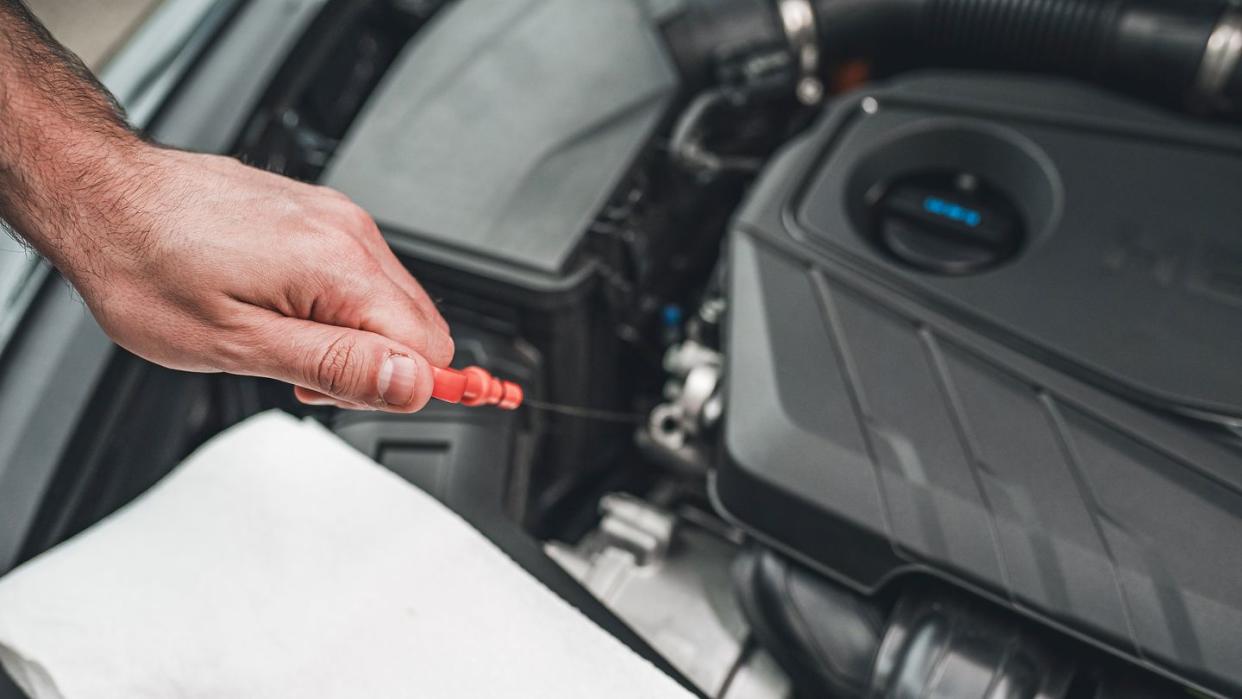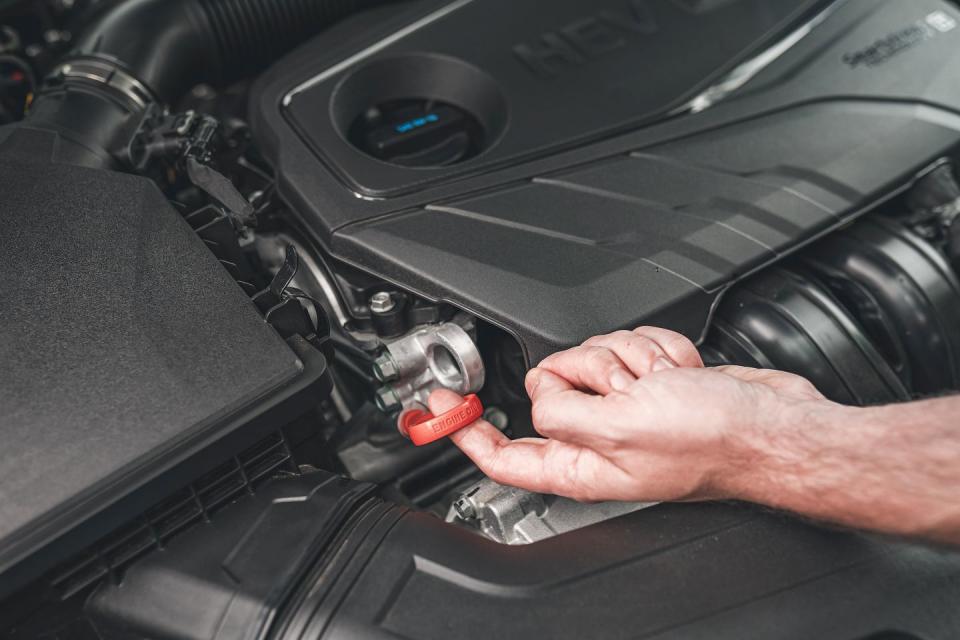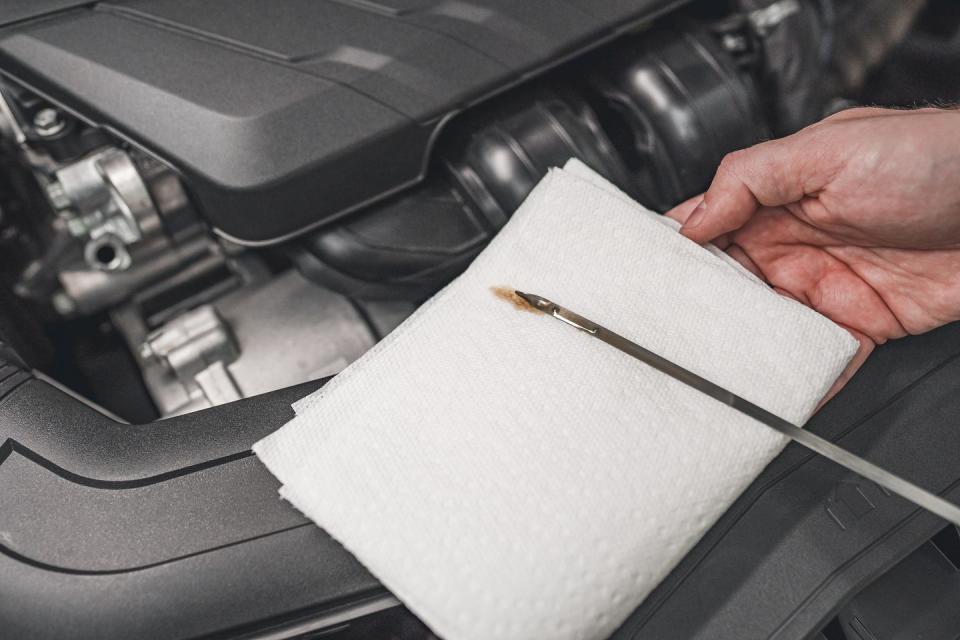How to Check Your Car's Oil

Cars have been around for 125 years, but despite becoming incredibly complex and digitally sophisticated, one thing hasn't changed: they still need their engine's oil level checked regularly. If your car, SUV, truck, or minivan has a gas or diesel engine under its hood one of the most important things you can do to keep it running well—and for a long time to come—is to ensure that the engine always has enough oil in it. It's simple to know if your vehicle's oil level is where it should be: just follow the easy steps below to see how to check your car's oil properly. Electric vehicles, by the way, don't use lubricating oil, so you're free of that maintenance responsibility if you're driving an EV.
Most newer gasoline or diesel-powered cars will use virtually no oil between their required oil-and-filter changes. Then again, some do, and you have no way of knowing where your engine's oil level is at except to monitor it. Over time, most older cars, especially those approaching 100,000 miles, will likely burn a small amount of oil with each passing mile, a natural result of the engine's internals having worn. Those small amounts of oil can add up, so if you fail to keep an eye on oil consumption you could be in for some expensive repairs—or worse. Running your engine out of oil can cause a catastrophic engine failure that will render your ride undriveable—and in need of a new engine.
Here's how to keep that expensive problem from happening: check your oil once a week for a month and you'll know how quickly it gets depleted—or if it gets depleted at all. Once you know that, you can check it less frequently—say, once a month.
Note: Some cars today can check their own oil. A number of new vehicles have a self-check feature that monitors oil level every time you start up. Some of these vehicles enable you to assess if the oil level is in the safe zone through the digital instrument cluster or via the center-stack screen. Your owner's manual will tell you if you have this feature and how it works. Other vehicles will simply send you a warning when and if oil needs to be added or changed. Self-checking systems generally don't have an alternative way for you to check the oil level manually, under the hood. If your vehicle is one that needs to have its oil checked manually, however, follow these steps.
Step 1: Pre-check Prep
Make sure your vehicle is on level ground—parking on a grade will cause an incorrect oil-level reading. Put the transmission in "park," and set the parking brake. (If you have a stick-shift car, ensure that it's in first gear). The engine should be off, and, preferably, warmed up. Open the hood.
Most vehicles have a hood-release lever under the instrument panel on the left side. There's also a safety catch under the front edge of the hood that you'll have to unlatch before you can raise the hood. If you've never done this, read how to in your vehicle's owner's manual.

Step 2: Locate the Dipstick
The dipstick tells you if your oil level is within the optimum range or if you need to add oil The dipstick is a metal rod with a handle on it—usually in an easy-to-spot yellow color—on which an oil-can symbol is stamped. The dipstick is housed in a small tube that leads downward and connects to the car's crankcase, where the engine oil is stored.
Step 3: Pull and Clean the Dipstick
Pull the dipstick all the way out of the tube it's housed in. Use a clean rag or paper towel to wipe off any oil on the dipstick. Examine the tip of the dipstick once it's cleaned off. You'll see two lines: the lower line indicates that the oil level is one quart low, while the upper mark indicates "full." On some dipsticks the upper mark says "safe" and the lower mark reads "add."

Step 4: Take a Reading
Insert the clean dipstick slowly all the way into the tube, as if sheathing a sword. Make sure it's pushed all the way down. Next, withdraw it slowly and check the tip, which should have oil on it. If there's oil showing on the dipstick at the low mark or below it's time to add a quart of oil. If there's no oil on the tip, your oil level is way low and you need to add a quart immediately and then recheck the oil level as explained above after waiting a few minutes.
Step 5: Wait and Re-check
If you've added a quart of oil, wait several minutes and check the oil level again. This gives the oil time to make its way down to the crankcase, which is at the bottom of the engine. Remember, your oil level doesn't have to be exactly at the upper mark for your engine to operate safely; it only needs to be between the lower and upper hash marks. If the oil level is in the safe zone, it's time to motor!
You Might Also Like

 Yahoo News
Yahoo News 
